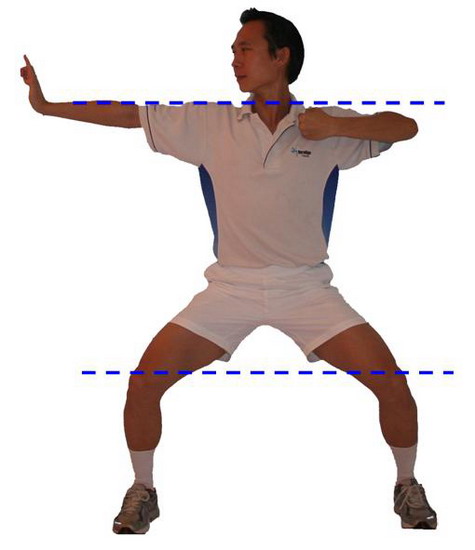18.5 - 24.9 = Normal
25 - 29.9 = Overweight
> 30 = Obesity



If time permits, I would like to sign up for a proper course. It was good exercise :)
- Beatty Sec
- Beatty Sec
- Beatty Sec
- ICA
- CHIJ St Nicholas Girls School
There were so many moves of self-defense. Coaches are very nice. This rocks!
- Northland Primary
- CHIJ St Nicholas Girls School
Coach make us feel “Taichi"
- Hong Wen School
I want to learn more advanced Taichi.
- Hong Wen School
- Princess Elizabeth Primary
The coach is very good in Wushu, I would like to continue learning.
- Princess Elizabeth Primary
- Princess Elizabeth Primary
Read More >>
(WORD COUNT: 518)
Osteoporosis has become the most common metabolic bone disorders [1, 2]. Osteoporosis is “a skeletal disorder characterized by compromised bone strength, predisposing to an increased risk of fracture”.
There is over millions of individual suffering from osteoporosis or having low bone mass worldwide. Treatment of osteoporosis involves using either antiresorption agents or bone formation agents. There are complementary therapies that are considered to be safer, are more popular. These complementary therapies include weight bearing exercise, herbal medicine, massage, relaxation techniques and tai chi.
We will look into the scientific approach behind Tai Chi as a complementary therapy for osteoporosis.

Many of the women in their late forties and fifties are either not willing or unable to engage in regular high impact exercise. They are actually in a fast bone loss phase of their lives, when efforts to slow bone loss are actually very important.

Tai Chi provides a good form of weight bearing exercise, since it emphasizes a lot on the weight transfer of the body natural weight. In Tai Chi, you perform a series of slow, rhythmic and graceful controlled body movements while your body remains erect and anatomically aligned (Figure 1 & Figure 2).
By doing so, we activate the agonist/ antagonist/ synergist muscles in the correct firing sequence to support body mass in the direction of gravity. Muscle operating eccentrically create stress on the bone; the phenomenon of resistance training.
The intensity of the weight bearing exercise in Tai Chi is increased by either lowering of the posture or including weights during the Tai Chi practice. In this way, the bones will be forced to work even harder and more effective. Proper guidance and monitoring by professionally well trained Tai Chi coaches is strongly recommended for such high intensity Tai Chi weight bearing training. Sufficient calcium & vitamin D intake is also necessary in conjunction to the Tai Chi weight bearing exercise.[6]
Unlike many other forms of exercise, Tai Chi is suitable to people of all age, gender and races. In fact, Tai Chi is particularly beneficial to the elderly and people with impaired motor skills since Tai Chi emphasizes correct posture alignment and balance, the exercise may be a safer alternative for women with fragile bones than other high impact physical activities.
The specific exercises create sufficient loading on the bones (bone re-modeling), and do not create unnecessary stress on the joints through improper posture misalignment (e.g. Figure 3).
When coupled with the right intensity of Tai Chi training, together with correct postural alignment and the activation of the eccentric strength, it will then result in the optimal effectiveness of improving overall bone mass.

[1] Center for Disease Control and Prevention (2006) Osteoporosis. In. pp (available at: http://www.cdc.gov/nchs/data/nhanes/data briefs/osteoporosis.pdf) Accessibility verified 19 June, 2007
[2] WHO Scientific Group on the Prevention and Management of Osteoporosis (2003) Prevention and management of osteoporosis: report of a WHO scientific group (2000: Geneva, Switzerland). World Health Organization, Geneva[3] Hong Y, Li JX, Robinson PD (2000) Balance control, flexibility, and cardio respiratory fitness among older Tai Chi practitioners. Br J Sports Med 34:29–34
[4] Gong M, Zhang SZ, Wang B, Wang DH (2003) [Effects of long-term shadowboxing exercise on bone mineral density in the aged]. Chin J Clin Rehab 7:2238–2239 (in Chinese)
[5] Qin L, Au S, Choy W, Leung P, Neff M, Lee K, Lau M, Woo J, Chan K (2002) Regular Tai Chi Chuan exercise may retard bone loss in postmenopausal women: A case-control study. Arch Phys Med Rehabil 83:1355–1359
[6] Rockville, Md.: U.S. Dept. of Health and Human Services, Public Health Service, Office of the Surgeon General; Washington, D.C. - Bone health and osteoporosis: a report of the Surgeon General.
[7] Qin L, Choy W, Leung K, Leung PC, Au S, Hung W, Dambacher M, Chan K (2005) Beneficial effects of regular Tai Chi exercise on musculoskeletal system. J Bone Miner Metab 23:186–190
[8] Chan K, Qin L, Lau M, Woo J, Au S, Choy W, Lee K, Lee S (2004) A randomized, prospective study of the effects of Tai Chi Chun exercise on bone mineral density in postmenopausal women. Arch Phys Med Rehabil 85:717–722
[9] Shen CL, Williams JS, Chyu MC, Paige RL, Stephens AL, Chauncey KB, Prabhu FR, Ferris LT, Yeh JK (2007) Comparison of the effects of tai chi and resistance training on bone metabolism in the elderly: a feasibility study. Am J Chin Med 35:369–381 [10] Zhou Y (2004) [Effect of traditional sports on bone density of menopause women]. J Beijing Sport Univ 27:354–335, 360 (in Chinese)[11] Kim H, Lim J (2006) Effect of 6 month tai chi exercise program on physical health, bone mineral density and fracture risk in institutionalized elderly. In The 1st international conference of tai chi for health. Seoul, South Korea, p 170
[12] Maciaszek J, Osinski W, Szeklicki R, Stemplewski R (2007) Effect of tai chi on body balance: randomised controlled trial in men with osteopenia or osteoporosis. Am J Chin Med 35:1–9

 Multivitamin Drink
Multivitamin Drink
 More info >>
More info >>
 More info >>
More info >>
 Sports Massage Therapy
Sports Massage Therapy